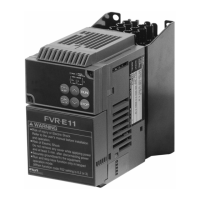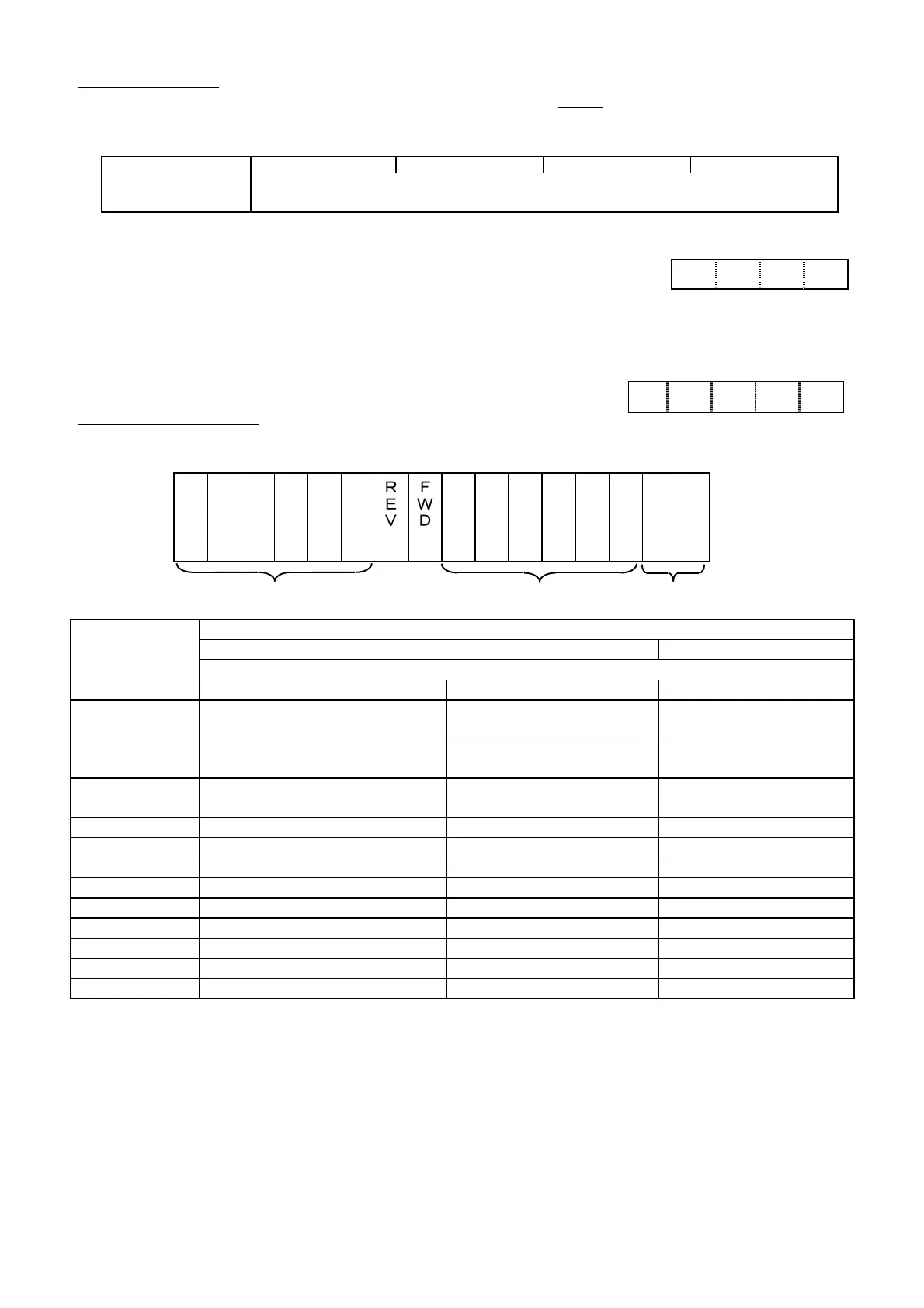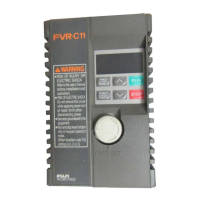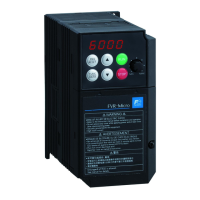9-27
(11) Data format 11
16-bit binary code, least increment 0.01, positive/negative data (5-byte ASCII code)
19
18
17
16
15
14
13
12
11
10
9
8
7
6
5
4
3
2
1
0
ASCII code (of
minus sign)
4-digit hexadecimal data ⇒ 4-digit ASCII code
Example: In the case that M09 (output frequency) = +60.00 Hz
60.00 × 100 = 6000 (dec.) = 1770 (hex.), hence: ⇒
Positive data is handled in a 4-byte ASCII code similarly to data format 0.
・In the case that M09 (output frequency) = -60.00 Hz
60.00 x 100 = 6000 (dec.) = 1770 (hex.). An ASCII code of the minus sign is added at the top.:
-1770
⇒
(12) Data format 12
Data format for P04, A13 (auto tuning)
15
14
13
12
11
10
9
8
7
6
5
4
3
2
1
0
0
0
0
0
0
0
R
E
V
F
W
D
0
0
0
0
0
0
*
*
H30 setting
0 or 1 2 or 3
Operation command
Communication
data
(P04 or A13)
Keypad panel Terminal block RS485
0000H
ACK: However, no operation ACK: However, no
operation
NAK
0100H
NAK NAK ACK: However, no
operation
0200H
NAK NAK ACK: However, no
operation
0300H
NAK NAK NAK
0001H
NAK Note 1 NAK
0101H
NAK NAK Note 2
0201H
NAK NAK Note 2
0301H
NAK NAK NAK
0002H
NAK Note 1 NAK
0102H
NAK NAK Note 2
0202H
NAK NAK Note 2
0302H
NAK NAK NAK
Note 1: Tuning is started upon a terminal block operation command. After tuning is completed, an ACK
response is given. (The ACK response is given before the terminal block is turned off.)
Note 2: After data is written via RS485, tuning is started. After tuning is completed, an ACK response is
given. (The operation command is automatically turned off.)
1 7 7 0
-
1 7 7 0
Unused (fixed to "0")
Unused (fixed to "0")
Data field

